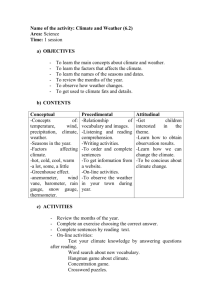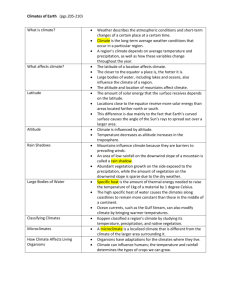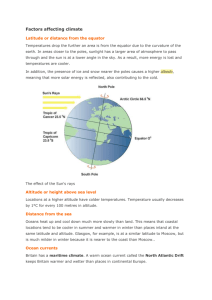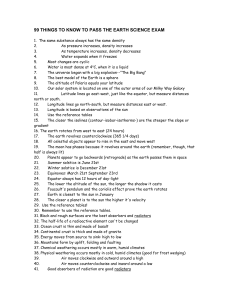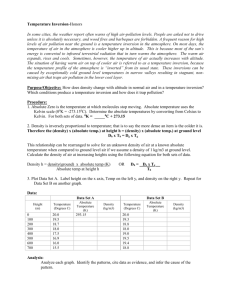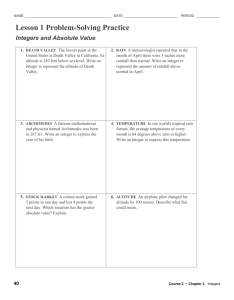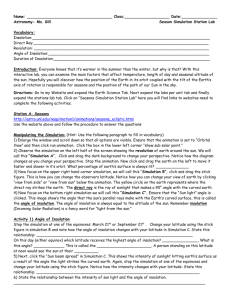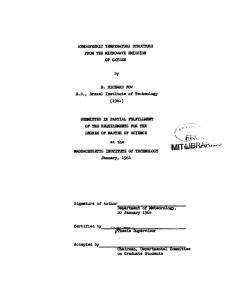Energy &
advertisement
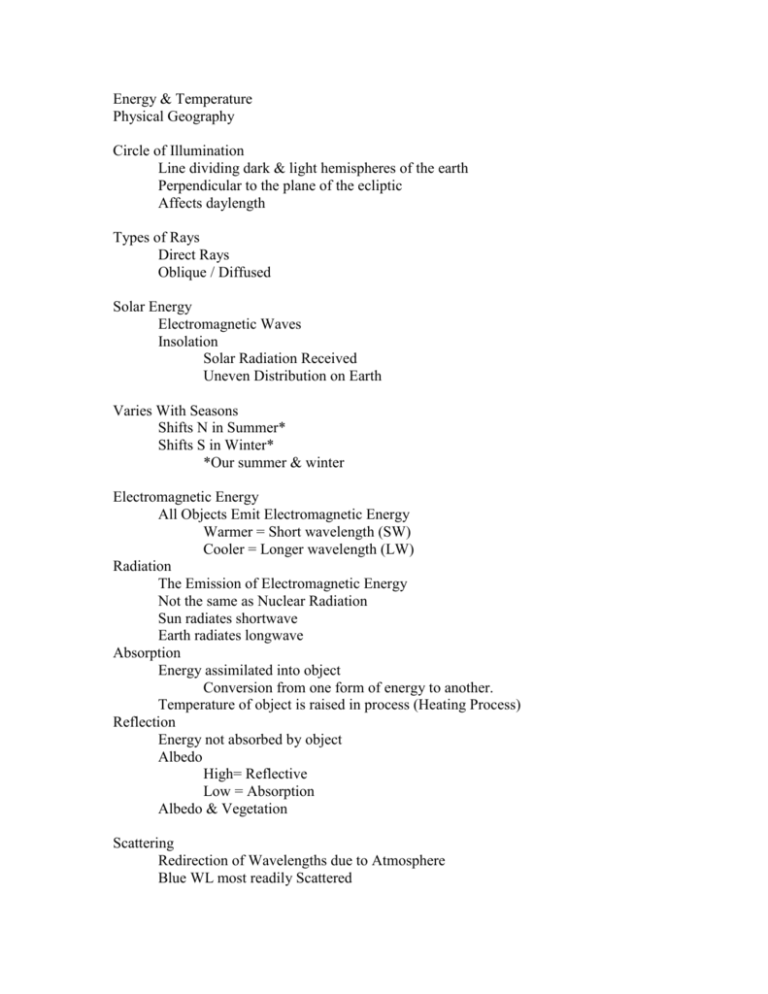
Energy & Temperature Physical Geography Circle of Illumination Line dividing dark & light hemispheres of the earth Perpendicular to the plane of the ecliptic Affects daylength Types of Rays Direct Rays Oblique / Diffused Solar Energy Electromagnetic Waves Insolation Solar Radiation Received Uneven Distribution on Earth Varies With Seasons Shifts N in Summer* Shifts S in Winter* *Our summer & winter Electromagnetic Energy All Objects Emit Electromagnetic Energy Warmer = Short wavelength (SW) Cooler = Longer wavelength (LW) Radiation The Emission of Electromagnetic Energy Not the same as Nuclear Radiation Sun radiates shortwave Earth radiates longwave Absorption Energy assimilated into object Conversion from one form of energy to another. Temperature of object is raised in process (Heating Process) Reflection Energy not absorbed by object Albedo High= Reflective Low = Absorption Albedo & Vegetation Scattering Redirection of Wavelengths due to Atmosphere Blue WL most readily Scattered Transmission Rate varies with different material (including atmospheric gasses) Glass allows SW through but blocks LW Traps Heat The Greenhouse Effect Atmosphere allows SW through but blocks LW The Earth’s Energy Budget/Balance All must balance or will heat or cool Impacts of Global Warming Sea Level Increase Climate Variability Increased Energy Consumption Water Shortages Changing Plant & Animal Ranges Speed of Change Agricultural Productivity Temperature Heat Temperature Fahrenheit Celsius Kelvin Temperature Controls Altitude Latitude Clouds Local Topography Land-Water Contrasts Altitude Temp Decrease with Increasing Altitude NOT Same as Rising Air Temperature Decreases 3.5ºF/1000’ Normal Lapse Rate Altitude: Temperature Inversion Not what you expect with Altitude Cool Air Below Warm Air Inversion Layer Smog in LA Strong Inversion Layer Possible Altitude: Surface Inversion Cool Clear Nights Earth Radiates Away Heat at Night Latitude Maximum Heating near Equator Less Insolation at Poles Differences in Day lengths Decrease in Temperature away from Equator Increase in Seasonality away from Equator Clouds Can keep an area cool or warm Trap Heat at Night or Block Incoming Insolation in Day Topography Local Features Catch-all descriptor Land/Water Differences Land Heats and Cools Faster than Water Oceans Moderate Temperatures Continental Locations Have Greater Temperature Variation Coastal vs. Continental Ocean Currents Slow Temp Change Allows Re-distribution of Energy (high specific heat of H20) Isotherms Connect areas of same temperature Global Annual Temperature Range Thermal Equator Urban Heat Island Cities are warmer than Surroundings Lack of Mixing Greater Absorption/Less Evaporation Waste Heat
